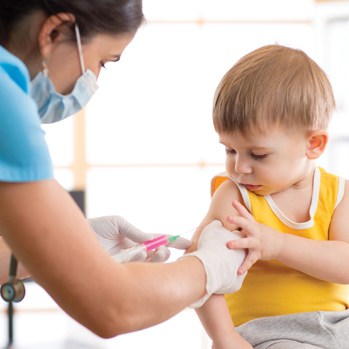During the 2021-22 school year, vaccination coverage among kindergartners nationwide was lower than during the 2019-20 school year, at approximately 94% for measles, mumps and rubella vaccine (MMR); diphtheria, tetanus, and acellular pertussis vaccine (DTaP); and varicella vaccines, according to the US Centers for Disease Control and Prevention (CDC)—a level just under the Healthy People 2030 target of 95%; coverage for all three vaccines decreased in a majority of states.
The fall from the 95% target has important implications for public health and raises concerns about outbreaks of communicable diseases, including measles. Children fell behind in their vaccinations because school entry was delayed, and well-child primary care visits were put off and missed because of the COVID-19 pandemic. Disruptions caused by COVID-19 reduced reported school enrollment, school response rates, and documentation for the 2020-21 school year. “This means that there are 35,000 more children in the United States during this time period without documentation of complete vaccination against common diseases,” said Georgina Peacock, MD, MPH, acting director of the CDC’s Immunization Services Division. Dr. Peacock also noted that 400,000 fewer children than expected entered kindergarten in 2020-21; enrollment reported in 48 states was 10% lower than was reported in 2019-20. It is unknown whether those children are vaccinated.
Vaccination coverage among US children in kindergarten in 47 states and the District of Columbia was 93.9% for two doses of MMR, 93.6% for the state-required number of doses of DTaP; and 93.6% for the state-required doses of varicella vaccine. Compared with the 2019-20 school year, vaccination coverage decreased by approximately one percentage point for all vaccines.
The exemption rate remained low at 2.2%, the CDC states. An additional 3.9% of kindergartners who did not have a vaccine exemption were not up to date for MMR.
Schools and immunization programs can increase follow-up with undervaccinated students to reduce the impact of COVID-19–associated disruptions on vaccination coverage to protect students during the return to in-person learning, the CDC advises.






